Top 10 Alpaca Breeds for Premium Fiber Production
If you want premium fiber, focus on Huacaya and Suri alpacas—the top breeds for fine fleece. Huacayas offer dense, crimpy fiber with softness around 20-25 microns, while Suris provide silky, longer locks, prized for luxury textiles. Fiber crimp, micron count, and genetic heritage play huge roles in quality. Selecting animals with proven bloodlines and good fiber density boosts your yield and value. Stick with these and you’ll reveal even more insights to maximize your fleece’s potential.
Key Takeaways
- Huacaya alpacas dominate premium fiber production with dense, crimpy fleece and micron counts between 20-25 for softness and warmth.
- Suri alpacas produce silky, long fibers up to 12 inches, prized for luxury fabrics with fine micron counts around 20-25.
- Selecting alpacas from proven bloodlines enhances fiber quality, density, and fleece weight through genetic heritability and careful breeding.
- Consistent fiber uniformity and low micron variation under 25% are essential for valuable, soft, and spinable alpaca fleece.
- Males typically yield over 10 pounds of fleece annually, while females average around 5.5 pounds, focusing on density and micron count.
Huacaya Alpaca Characteristics and Fiber Quality
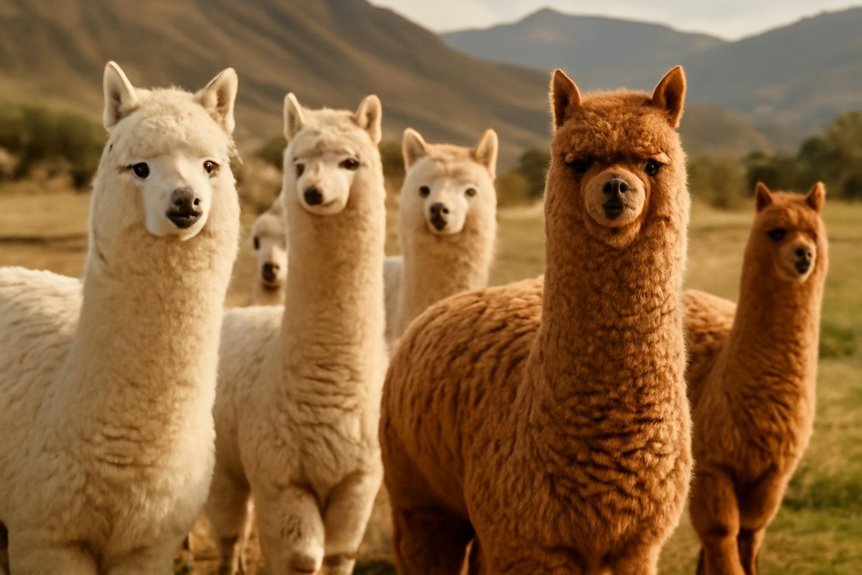
If you’re looking into alpacas for premium fiber, the Huacaya breed deserves your attention. Huacaya alpacas make up about 90% of the population and are prized for their dense, crimpy fleece, which provides excellent fiber quality. Their woolly appearance signals a soft, durable fleece with high elasticity thanks to the natural crimp in the fibers. You can expect an average micron count between 20 and 25 microns, which strikes the perfect balance for softness and comfort in textiles. Annually, a Huacaya yields roughly 5 to 10 pounds of fleece, often graded as baby alpaca, fetching premium prices. Maintaining consistent fiber quality with low variability and a high percentage of fibers below 30 microns is key for maximizing both marketability and value.
Suri Alpaca Attributes and Fiber Appeal
Although Suri alpacas make up only about 10% of the population, their long, silky fibers set them apart for premium textile production. You’ll notice that suri alpacas produce fiber up to 12 inches in length, which creates luxurious, flowing fabrics prized in high-end fashion. Their fiber quality is exceptional, with a finer micron count between 20 to 25, placing it firmly in the premium fiber category. Unlike other breeds, suri alpacas have a smoother, less crimped fleece, giving their fiber a distinct silky texture. Plus, with over 22 color variations, you get diverse options for unique textile creations. If you’re aiming for top-tier fiber, suri alpacas offer a blend of elegance and quality that’s hard to match.
Impact of Fiber Crimp on Alpaca Fleece Value
Suri alpacas’ silky, less crimped fibers offer a distinct texture, but when analyzing alpaca fleece value, fiber crimp plays a significant role across breeds. The crimp factor—the natural waves in the fiber—boosts elasticity and spinability, directly impacting fleece quality. You’ll find that alpacas with finer, more consistent crimps typically produce softer, warmer fleece due to the tiny air pockets created, enhancing insulation. Alongside fiber diameter, crimp is key in determining market value; finer, well-defined crimps lead to higher prices because they contribute to a luxurious hand feel ideal for next-to-skin garments. So, when evaluating premium alpaca fleece, don’t overlook the crimp factor—it’s as essential as fiber diameter in defining both aesthetic appeal and functional performance.
Role of Bloodline and Genetic Heritage in Fiber Production
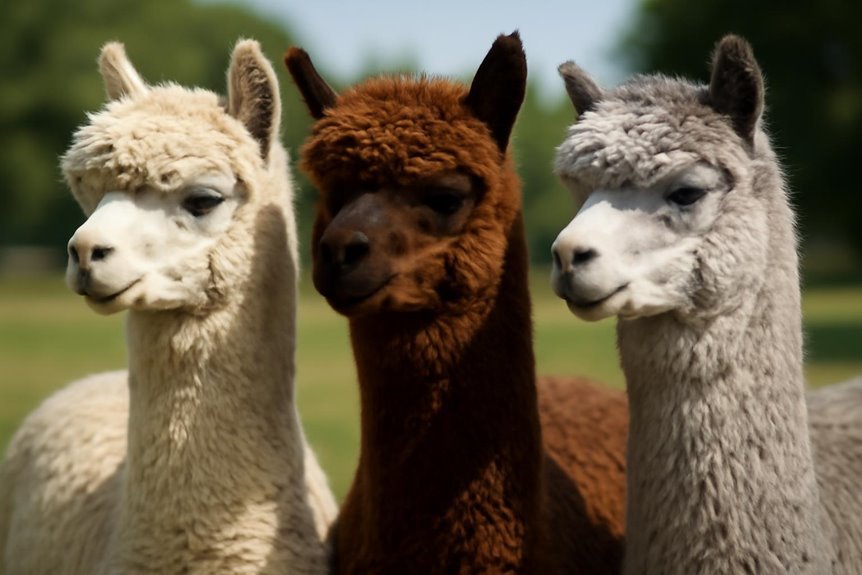
Because bloodline strongly influences fiber traits, understanding an alpaca’s genetic heritage is key to producing premium fleece. When you focus on bloodline, you tap into inherited fleece characteristics that directly impact fiber quality and density. Maintaining genetic diversity is essential to avoid inbreeding, which can harm both fleece and health. To optimize fiber production, consider these points:
- Select males with proven fiber traits to enhance desirable fleece characteristics in offspring.
- Use outcrossing to blend strengths from different bloodlines for improved fiber quality.
- Review the fiber production history of ancestors to predict fleece consistency and potential.
Importance of Fiber Micron Count and Uniformity
You’ll want to focus on the micron count since finer fibers under 25 microns make for softer, more valuable fleece. Consistent fiber uniformity, with low variation, not only improves the feel but also boosts spinability and overall quality. These factors directly impact how desirable your alpaca’s fiber is on the market.
Micron Count Significance
Micron count plays a essential role in determining the quality of alpaca fiber, especially when you’re aiming for softness and comfort in garments. A lower micron count means finer, softer fleece, which is significant for producing premium textiles. When selecting breeding stock, focusing on animals with a micron count of 25 or less guarantees you’re working with quality fiber that meets market demands. Keep these points in mind:
- Micron count under 25 microns produces soft, next-to-skin fiber.
- Higher micron counts (above 30) tend to be coarse and less desirable.
- Regular testing helps track fiber quality and guides breeding decisions.
Fiber Uniformity Benefits
While selecting alpacas with a fine fiber micron count is essential, ensuring uniformity in that fiber is just as important for producing premium textiles. Fiber fineness alone won’t guarantee superior quality; fiber uniformity plays a significant role in how well the fleece spins into smooth, consistent yarn. When fiber diameter varies too much, it can create weak spots and uneven texture, reducing the overall quality of Alpaca fleece. You want a low coefficient of variation—ideally 25% or less—and keep fibers over 30 microns under 5%. This consistency not only enhances the softness and durability of the fabric but also reflects strong genetics in your herd. Focusing on fiber uniformity helps you produce a truly premium textile that stands out in both feel and performance.
Impact on Marketability
A key factor in selling alpaca fiber is its micron count and uniformity, which directly influence its market appeal. When you’re selecting alpacas, breeders select those producing fiber with ideal qualities to maximize market value.
Here’s why fiber quality matters:
- Fibers averaging 25 microns or less fetch higher prices due to their softness and specialty appeal.
- Uniformity, with a coefficient of variation under 25%, guarantees consistent fleece that’s easier to process and more desirable.
- Fleeces containing over 5% of fibers above 30 microns can cause prickle, reducing comfort and demand.
Influence of Alpaca Breed Standards on Fiber Quality
You’ll find that breed standards play a key role in defining what high-quality fiber looks like, focusing on traits like micron count and fleece uniformity. These standards guide breeders in selecting animals with the best fiber characteristics, shaping the future of alpaca genetics. By evaluating specific fiber traits against these benchmarks, you can better understand how breed standards influence the overall quality of the fleece.
Defining Fiber Quality
Because breed standards set the ideal traits for alpacas, they play an essential role in defining fiber quality. As an alpaca breeder, understanding these standards helps you select animals with superior fleece characteristics that meet market demands. Fiber quality is mainly judged by:
- Fineness, measured by average diameter (micron count), indicating softness and value
- Density and uniformity, ensuring consistent, high-quality fleece across the alpaca’s body
- Specific fleece traits like the Huacaya’s crimpy texture or the Suri’s silky luster
Standards Impact Breeding
Understanding fiber quality sets the foundation for effective breeding strategies. When you follow established alpaca breed standards, you directly influence the quality of fiber your animals produce. These standards impact breeding by defining traits like fineness, density, and uniformity, which are essential for high quality fleece. By using these benchmarks, you can select alpacas that not only meet conformational correctness but also excel in fiber traits, helping improve the quality of your herd’s fiber. Sticking to these standards boosts your alpacas’ market value since animals producing premium fiber are more desirable. Ultimately, the emphasis on breed standards helps you focus on performance traits that raise fiber quality and production efficiency, benefiting both your breeding program and the broader alpaca industry.
Evaluating Fiber Traits
When evaluating fiber traits, it’s crucial to take into account how alpaca breed standards shape the quality you can expect. These standards set benchmarks that directly influence fiber quality and commercial value. For instance, breeding standards prioritize a low micron count and uniformity that promote premium fleece. You should consider:
- Average fleece weight alongside micron count to assess both quantity and fineness.
- Breed-specific traits, like Huacaya’s crimpy fleece versus Suri’s silky fibers, which affect elasticity and insulation.
- Consistency in fiber traits, secured by adherence to breeding standards, to maintain quality over generations.
Selecting Alpacas Based on Fiber Density and Weight
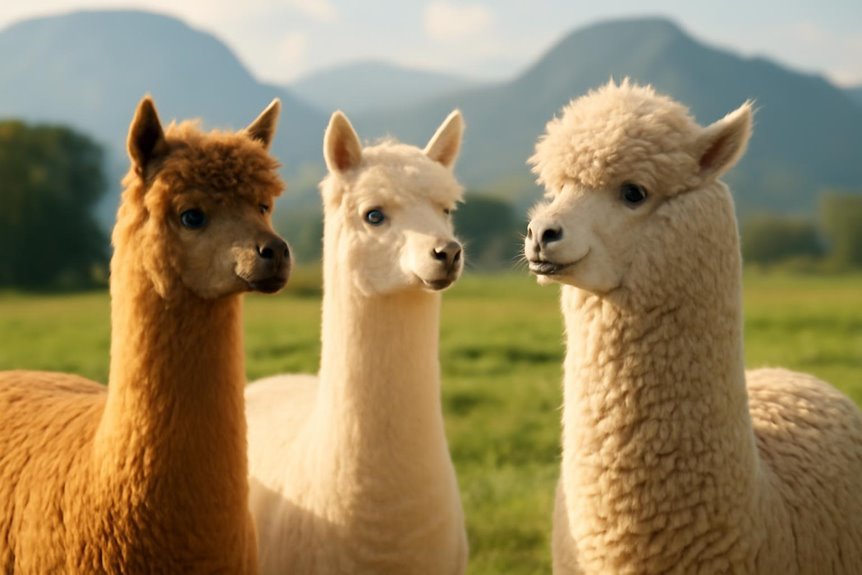
Though you might focus on many traits, selecting alpacas based on fiber density and weight is key for premium fiber production. You’ll want to prioritize alpacas that consistently produce at least 5.5 pounds of fleece annually for females and over 10 pounds for males, as these fleece weight benchmarks signal strong fiber output. Alpaca breeds like the Huacaya, which make up 90% of the population, are favored since they yield denser, crimpier fleece, enhancing fiber density and market value. Pay attention to fiber fineness too—aim for a micron count of 25 or less for softness. Also, monitor fiber production over time; first-year males should hit around 6 pounds, with growth expected later. This approach guarantees you select alpacas that deliver quality, dense fiber for premium products.
Breeding Strategies to Enhance Fiber Traits
Because fiber traits in alpacas have a heritability of about 30%, you can improve fleece quality by carefully choosing your breeding pairs. As breeders, your breeding program should focus on pairing alpacas to maximize desirable fiber characteristics while correcting weaknesses. You might consider:
- Like-to-like genetic inbreeding to reinforce superior fiber traits by mating alpacas with similar high-quality fleece.
- Disassortative mating to introduce genetic diversity and fix undesirable fiber traits within your herd.
- Selecting animals from proven bloodlines known for fine, dense fiber and high fleece weight to enhance offspring quality.
Regularly monitoring fiber metrics like micron count and uniformity helps you adjust your breeding program effectively. By applying these strategies, you’ll steadily enhance fiber traits and boost your herd’s overall fleece quality.
Economic Benefits of Premium Alpaca Fiber
If you’re aiming to maximize the return on your alpaca herd, focusing on premium fiber production can be highly rewarding. Premium alpaca fiber fetches prices far above traditional wool—often up to $40 per pound compared to wool’s $5 to $10. This specialty fiber’s warmth, lightness, and hypoallergenic qualities make it a prized material in luxury textiles, boosting its economic viability. With each alpaca producing about 5 pounds of fleece annually, a modest herd of 10 can generate over $20,000 yearly from fiber sales alone. Additionally, increasing demand for sustainable, eco-friendly fibers enhances market opportunities. You can also benefit from tax deductions related to feed, veterinary care, and livestock depreciation, further improving the overall profitability of investing in premium alpaca fiber production.
Maintaining Consistency in Fiber Quality Over Time
To keep your alpaca fiber consistently high-quality, you’ll need to closely monitor fiber production throughout the animal’s life, especially as they age. Pay attention to changes in micron counts and fleece weight, since aging can impact softness and yield. Staying on top of these details helps guarantee your fiber stays premium season after season.
Monitoring Fiber Production
How do you guarantee your alpaca fiber remains top quality year after year? Monitoring fiber production consistency is essential for maintaining both quality and quantity. By keeping detailed records of individual fiber production, you can track trends and spot any drops in fleece quality early on. Focus on these key practices:
- Regularly assess micron count and standard deviation to confirm uniform fiber quality.
- Track first-year fiber output, aiming for at least 6 lbs, and expect over 10 lbs by the second year.
- Use long-term data to evaluate genetic traits, maintaining only the best herdsires in your breeding program.
Consistent monitoring not only safeguards your herd’s genetic excellence but also boosts your farm’s profitability by securing premium market prices for superior fiber.
Aging Impact on Quality
Although aging naturally affects an alpaca’s fiber production, you can maintain consistent quality by closely monitoring changes in both quantity and micron count. Each individual alpaca’s fiber quality may decline over time, so tracking first-year production benchmarks—around 6 lbs—and guaranteeing second-year yields exceed 10 lbs helps you evaluate long-term performance. Genetics and overall health also influence fiber quality, making regular assessments essential. Keep detailed records of micron count and uniformity to spot any unacceptable declines. If an alpaca’s fiber quality drops beyond acceptable limits, replacing it becomes necessary to preserve herd standards. By staying vigilant, you’ll guarantee your herd consistently produces premium fiber, reflecting the best genetic traits of each individual alpaca.
Frequently Asked Questions
What Is the Best Alpaca Fiber?
When you assess fiber quality, the best alpaca fiber has fine, uniform fleece characteristics. Royal Alpaca, under 18 microns, stands out. Sustainable alpaca farming supports producing such high-quality, soft, and valuable fiber for luxury garments.
What Is the Most Expensive Alpaca Breed?
You’ll find the most expensive alpaca breed is the Suri, thanks to advanced breeding techniques enhancing its fiber quality. Its luxurious fleece meets high market demand, making it a prized choice for premium textile production worldwide.
What Is the Best Type of Alpaca?
Choosing the best alpaca is like picking a perfect melody; you’ll want one with gentle alpaca temperament, easy alpaca care, and strong alpaca breeding traits to guarantee a rewarding, harmonious experience in your herd.
What Is the Most Desirable Alpaca Color?
You’ll find that alpaca color genetics and the color classification system play big roles in pricing. True black, white, light, and dark fawn are most desirable, as uniform alpaca color greatly impacts market value.

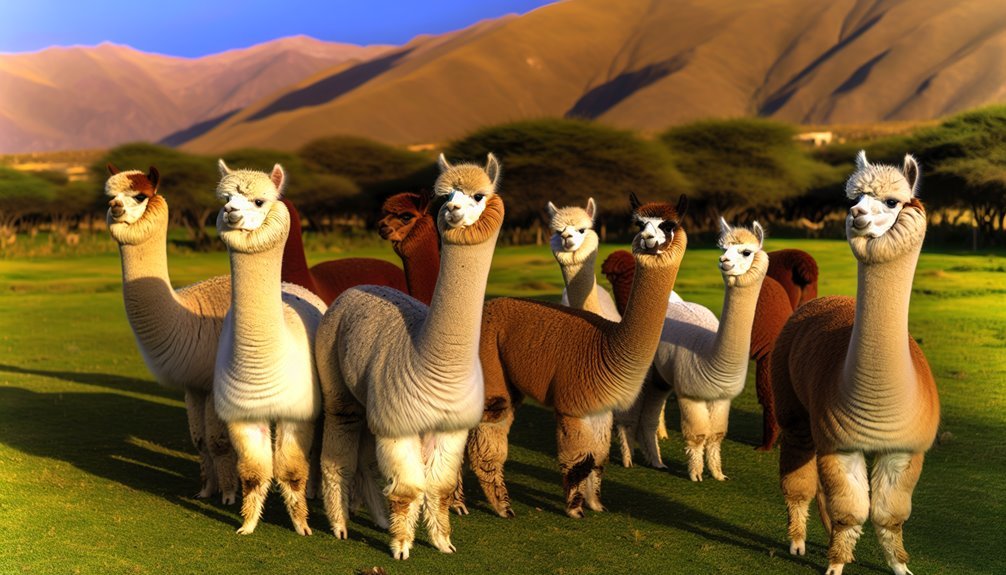
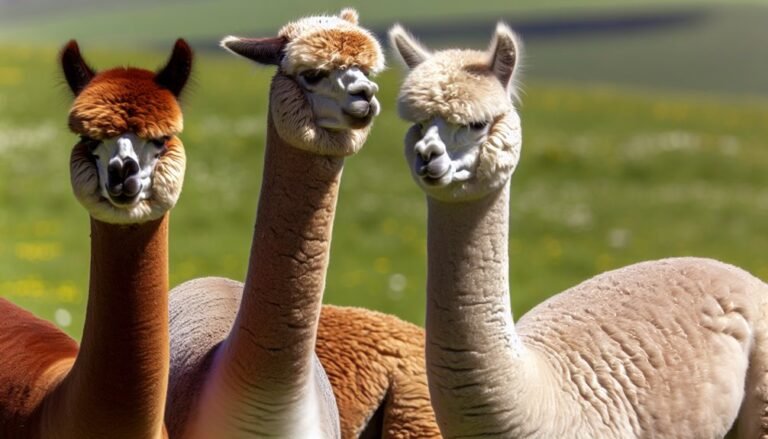
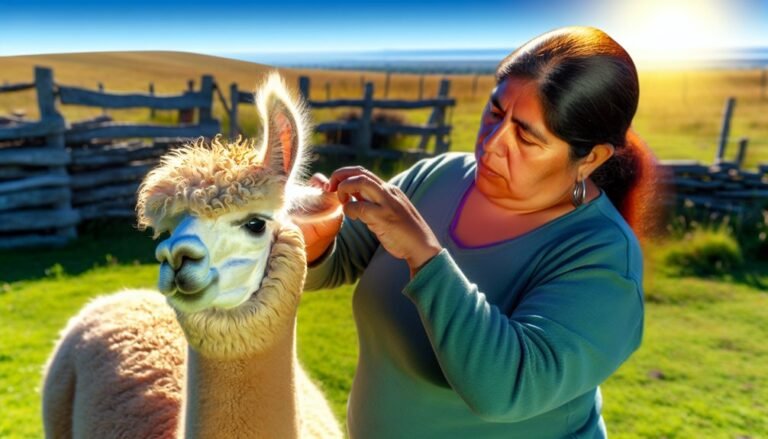


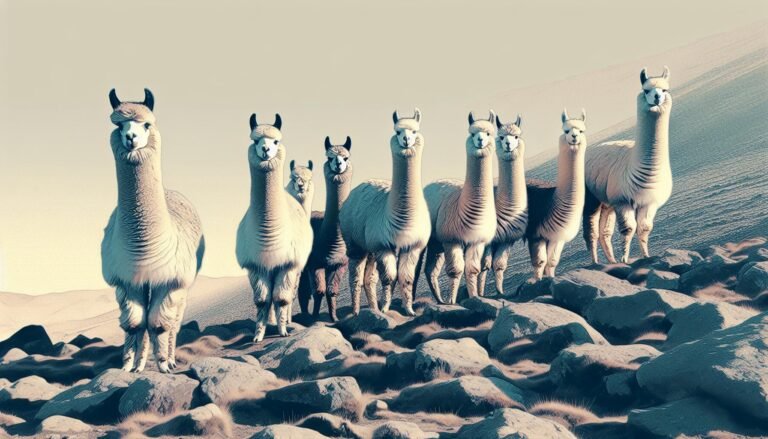
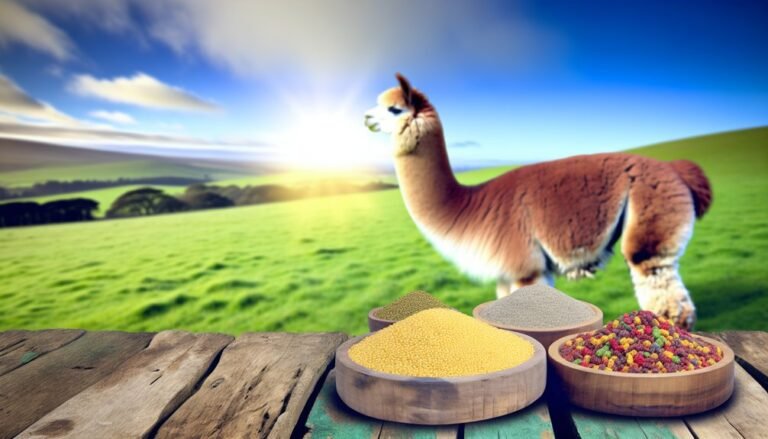
Our picks
Alpaca & Wool Felted Sole Inserts: Comfy Upgrade?
Best Alpaca Socks for Hiking: Ultimate Comfort and Durability on Trails
Best Alpaca Halter for Comfort and Control